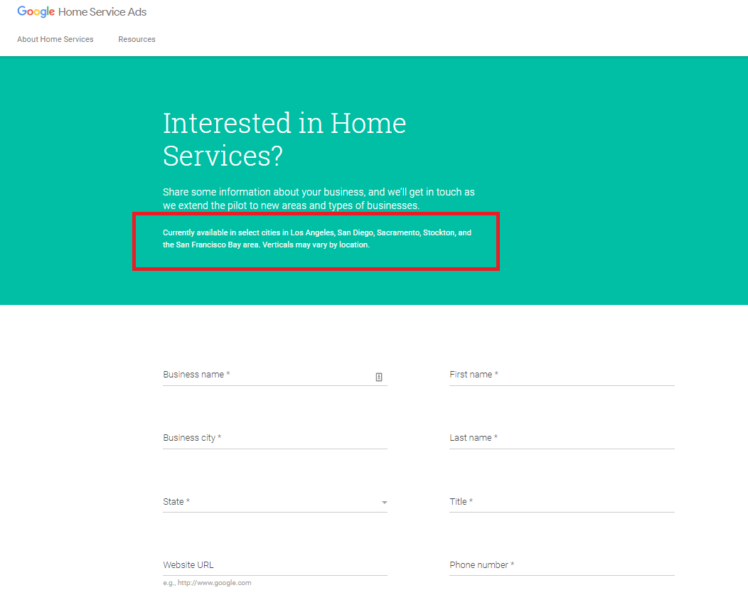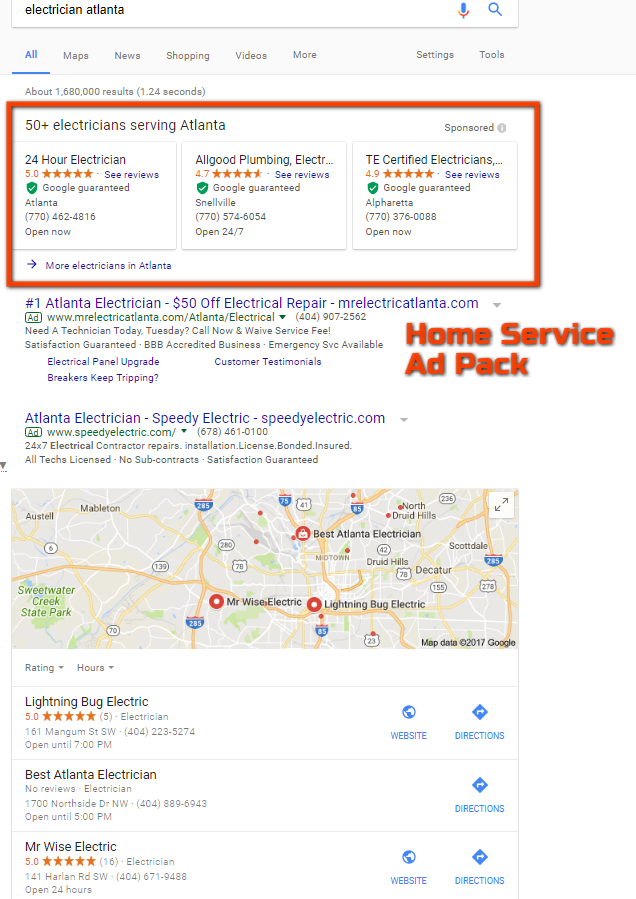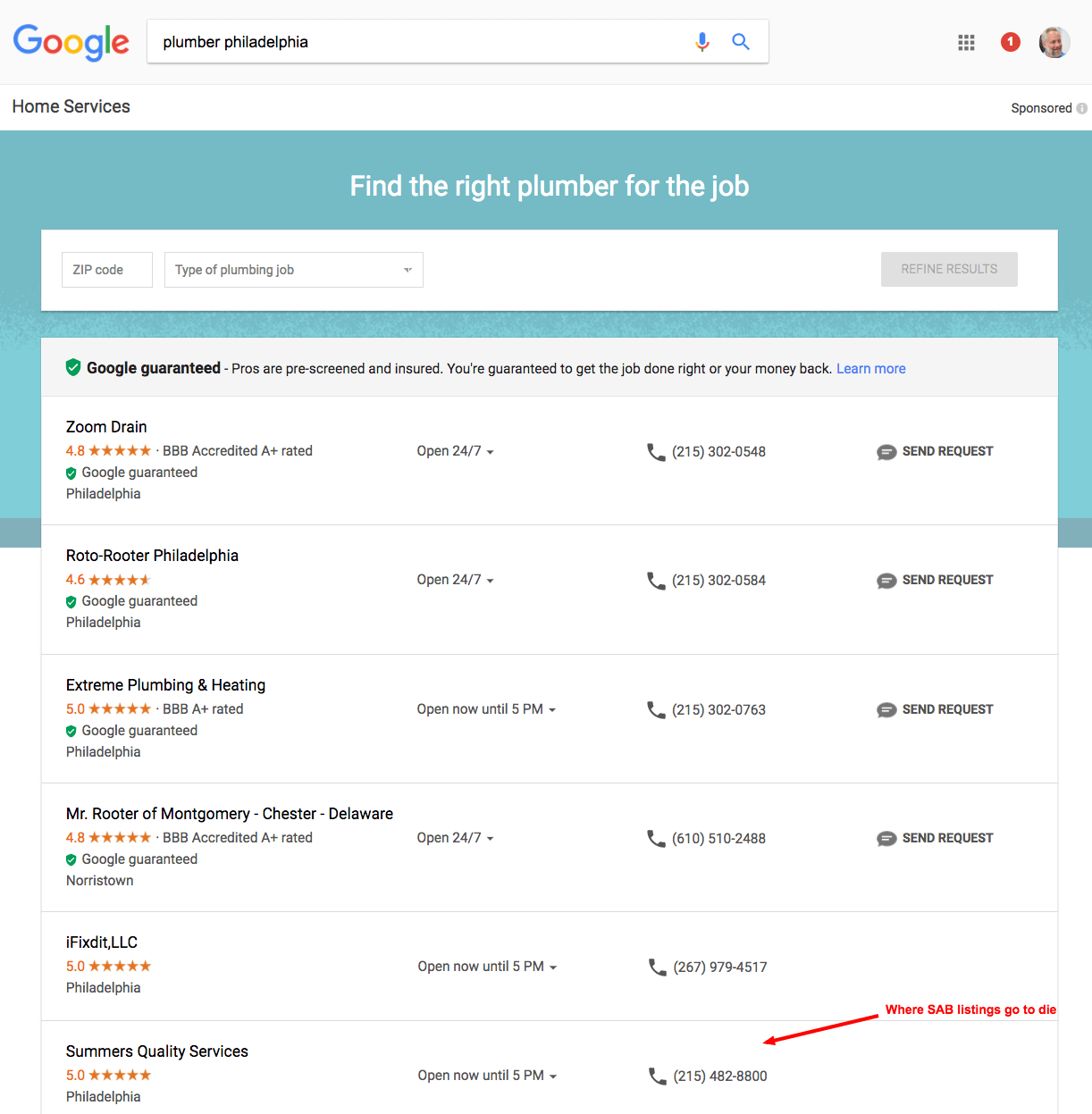
UPDATE: After this article was published, Google reached out to the author to clarify a few things:
- Google plans to add pure service-area businesses (SABs) back into the local results — this includes home-based businesses.
- The disappearance of results for home-based businesses in markets without Home Service Ads was due to a bug (not intentional), which Google says should be resolved soon.
Once these promised changes go live, Joy will write an article covering the impact, so stay tuned.
If you are a local business that provides home services in the United States, you should be bracing yourself for what will happen when Home Service Ads roll out in your industry and market. The changes are vast and make a huge difference in who ranks in the local results on Google. When they first started expanding them last year in San Diego, it wiped out 89 percent of the listings in the local results.
There is no warning
Unlike other features, Google isn’t preannouncing where they plan on rolling these out. Currently, there isn’t even an updated help article. Google’s signup page is also inaccurate, as it only lists cities in California, even though they rolled out to Philadelphia, Atlanta, Phoenix and Seattle weeks ago.

Google has been extremely quiet about the entire thing, and although there has been no announcement, we’re also seeing the ads in Chicago and Jersey City.
Home-based businesses are removed from the local results
This update has a massive impact on home-based businesses, since it completely removes them from the local results — because they typically don’t have a publicly available storefront address. They have the option of paying to be included in the AdWords Home Service Ad pack, but if they don’t, they get shoved down in this list below all the paid ads (so basically invisible). As Mike Blumenthal puts it, this is where home-based businesses go to die.


I am also starting to see Google do this in markets where there are no Home Service Ads. Suddenly, all the listings with hidden addresses just with no explanation, according to posts on a discussion board where local SEOs gather.
There is a way out
If you’re a home-based business and are losing sleep wondering when this will roll out to your industry and city, it’s time to start planning ahead. One solution that these service-area businesses have been using to survive this is to turn their home into a storefront.
If you’re reading that and think it sounds like nonsense — so did I, at first. After all, how on earth is a home a storefront? When I think of a storefront, I think of a Best Buy or a Walmart.
According to Google’s guidelines, here is what you would need to do to be eligible to show your address (aka be a “storefront”) on your Google My Business listing:
- The location must be staffed (your staff, not someone else’s) during office hours.
- The location must have permanent, onsite signage that is viewable from the street.
According to one of the locksmiths on this thread in the Google My Business advertiser community:
Another locksmith addressed the issue of staffing at a home location by clarifying:
I double-checked with Google myself, and they confirmed both those cases are fine.
As a joke, some of us thought it would be funny to ask Google if the business below qualifies as a storefront after they taped their business card to their door.

Google said it would not since the sign is not permanent and isn’t visible from Street View. Similarly, a listing in an apartment building would probably get removed since it would be almost impossible for them to have an external sign.
It seems Google’s end goal here isn’t to screw over home-based businesses but to get a better handle on all the spam that exists in these industries. By forcing businesses to be public about where they are located, it makes it much harder for lead generation companies to create listings for “businesses” that don’t actually exist.
We’re already seeing a wave of spam in a new form as a result of this. Businesses are putting signs up temporarily, snapping pictures and then taking them down. However, competitors seem to be very keen to report them, so this method really doesn’t work for long.
If you’re worried about showing your home address for privacy reasons, the only option would be to open up an office or pay for AdWords forever.
Have other questions about Home Service Ads? Feel free to tweet to me or post on the Google My Business forum.
Contributing authors are invited to create content for Search Engine Land and are chosen for their expertise and contribution to the search community. Our contributors work under the oversight of the editorial staff and contributions are checked for quality and relevance to our readers. The opinions they express are their own.



